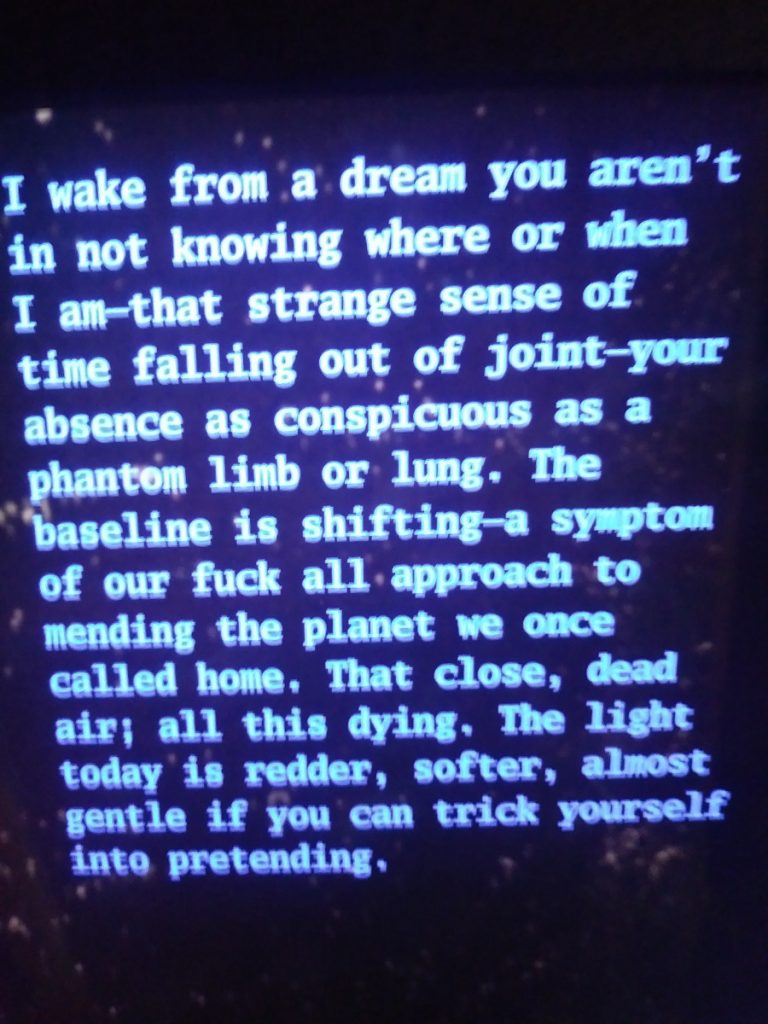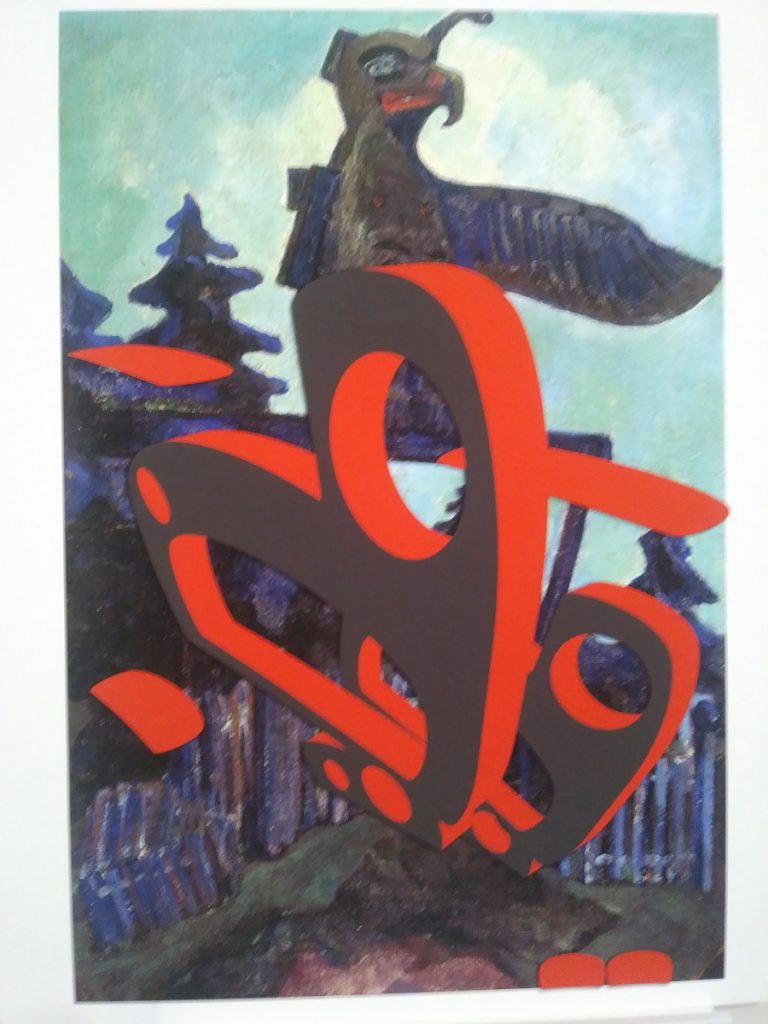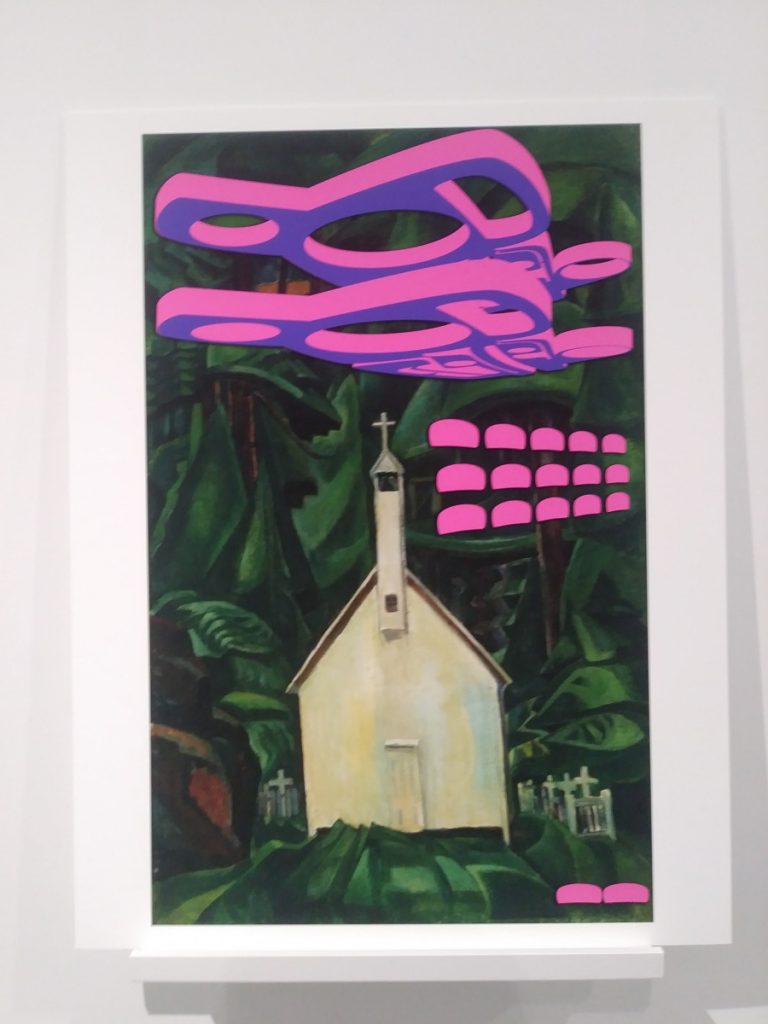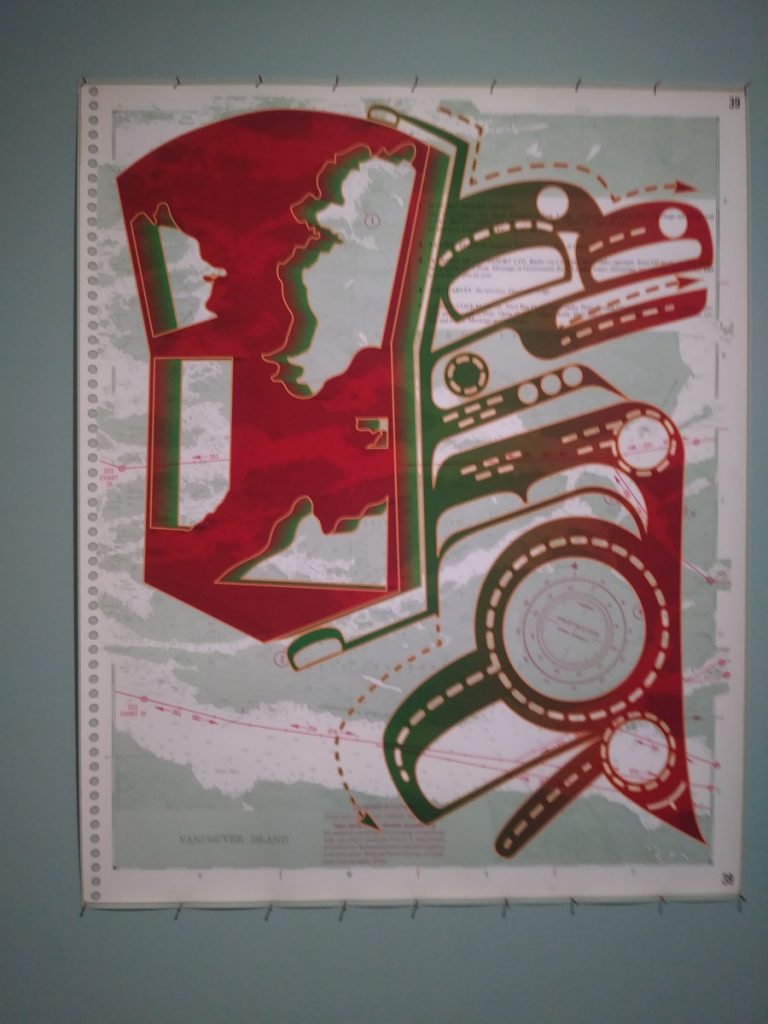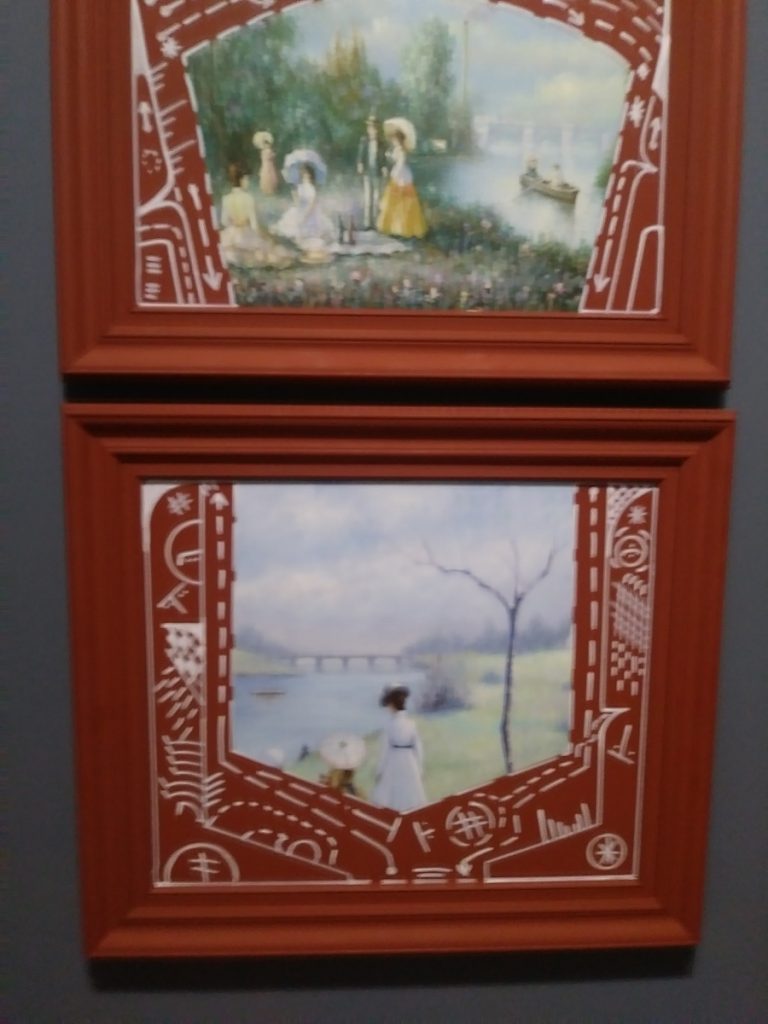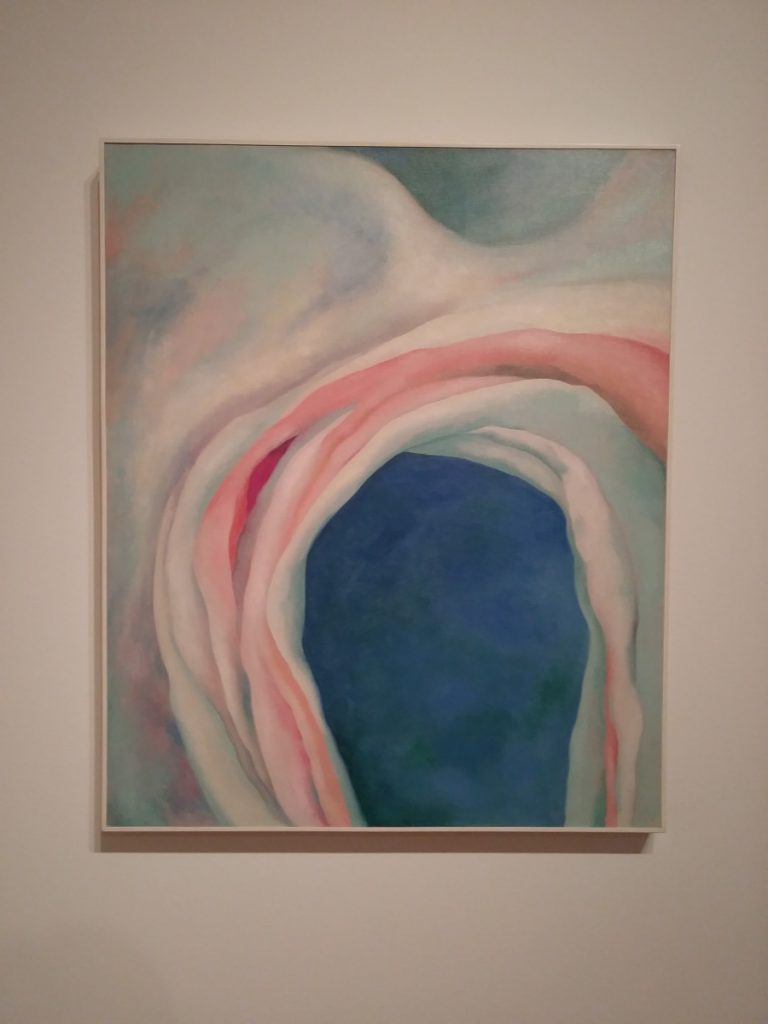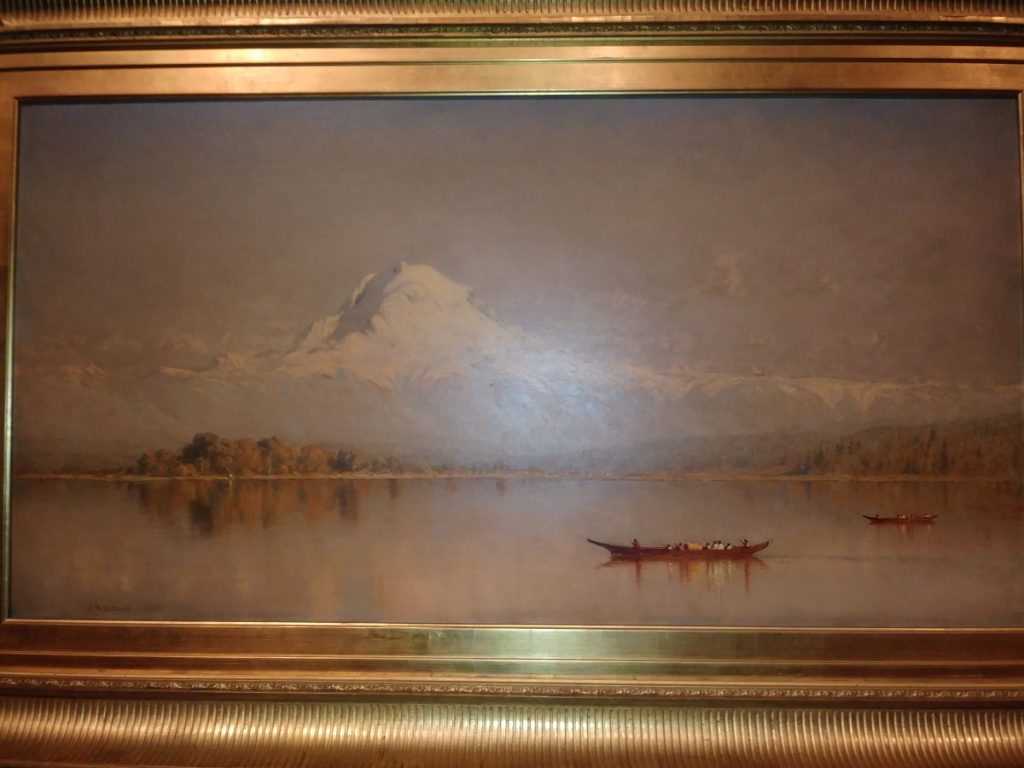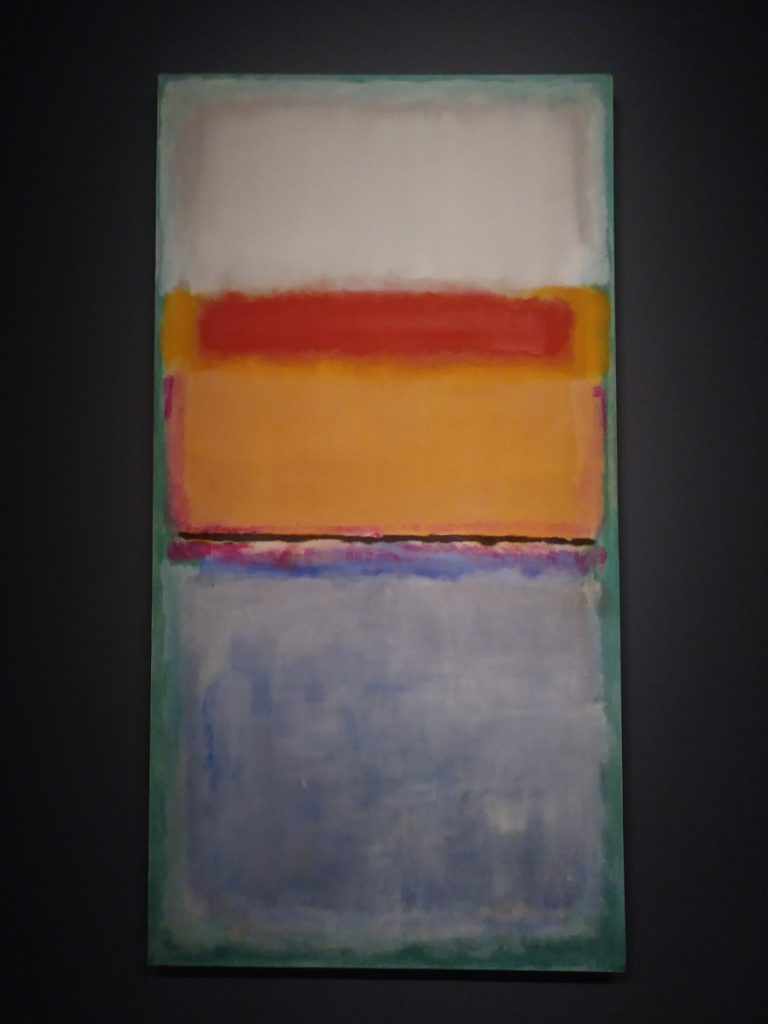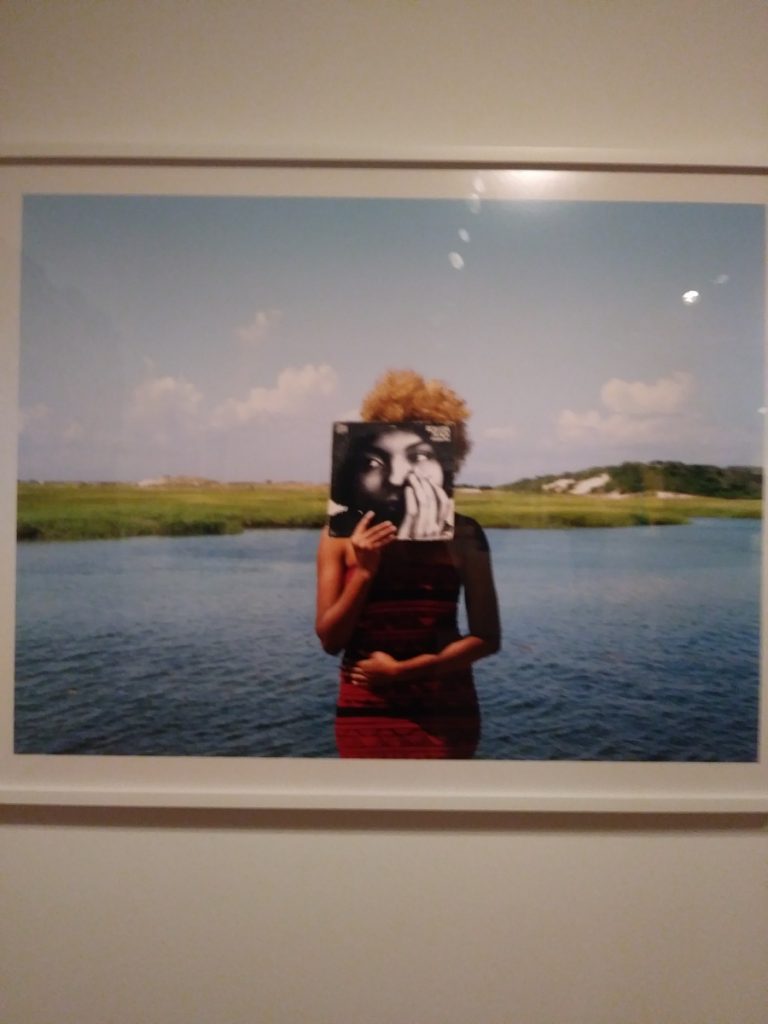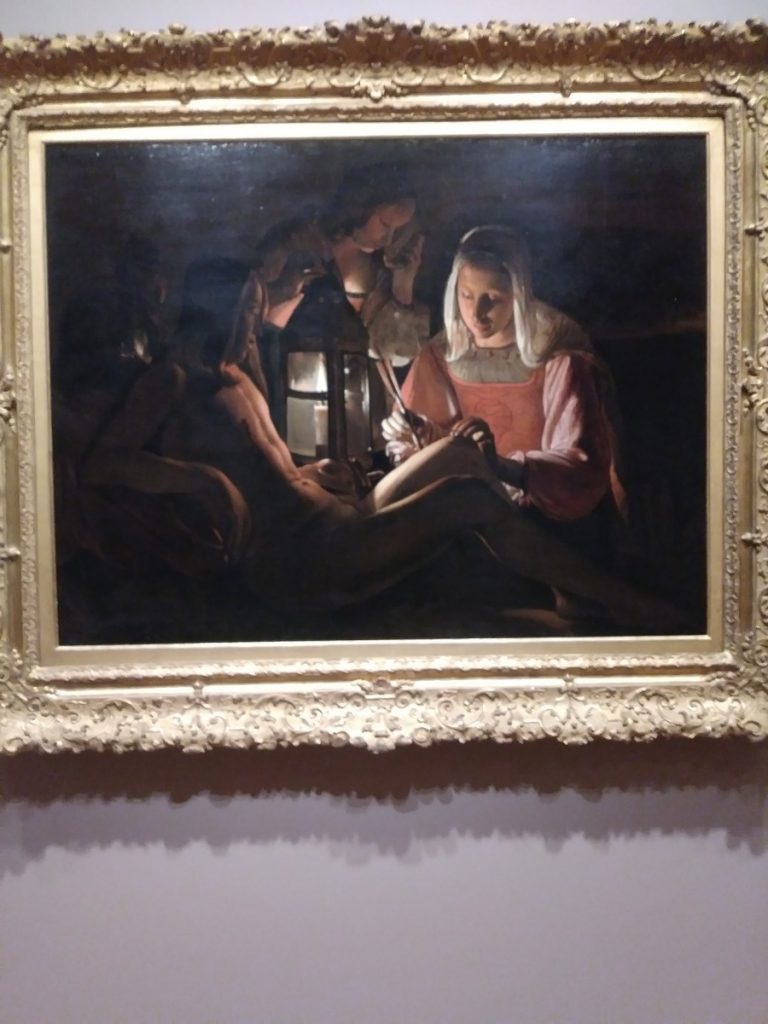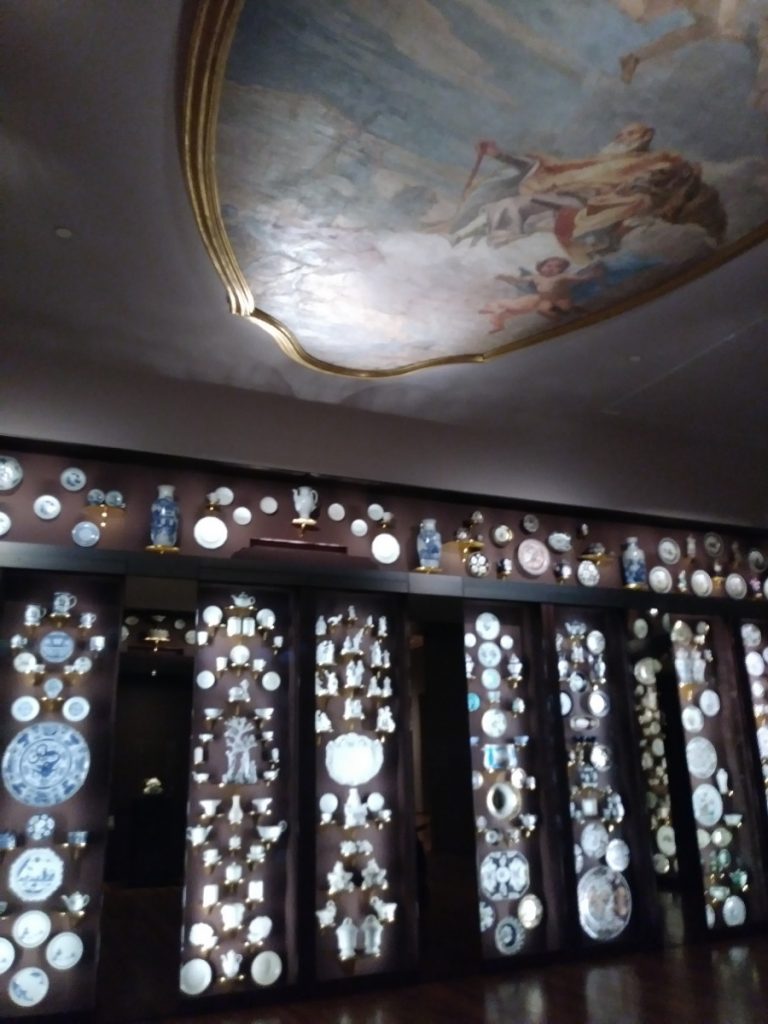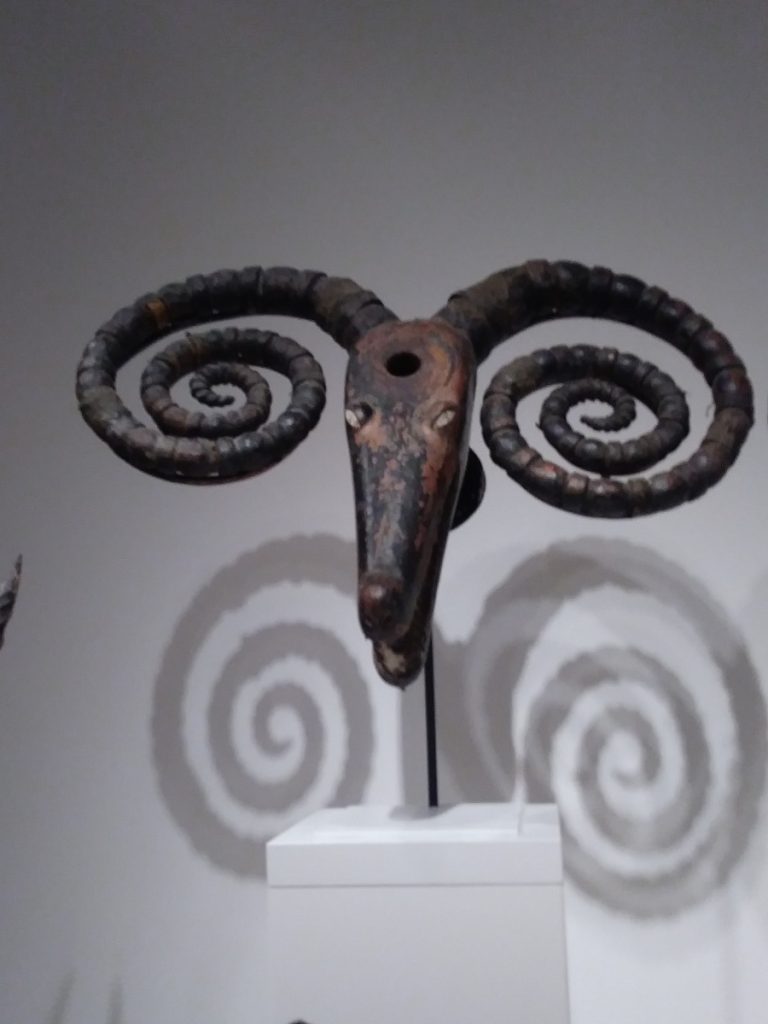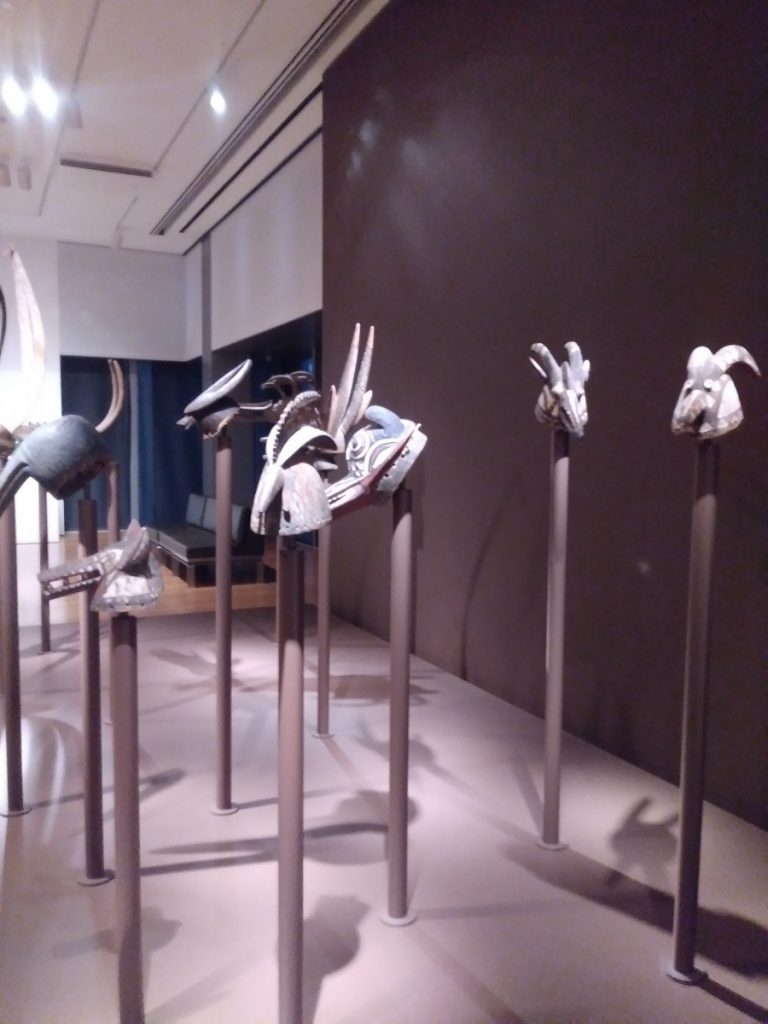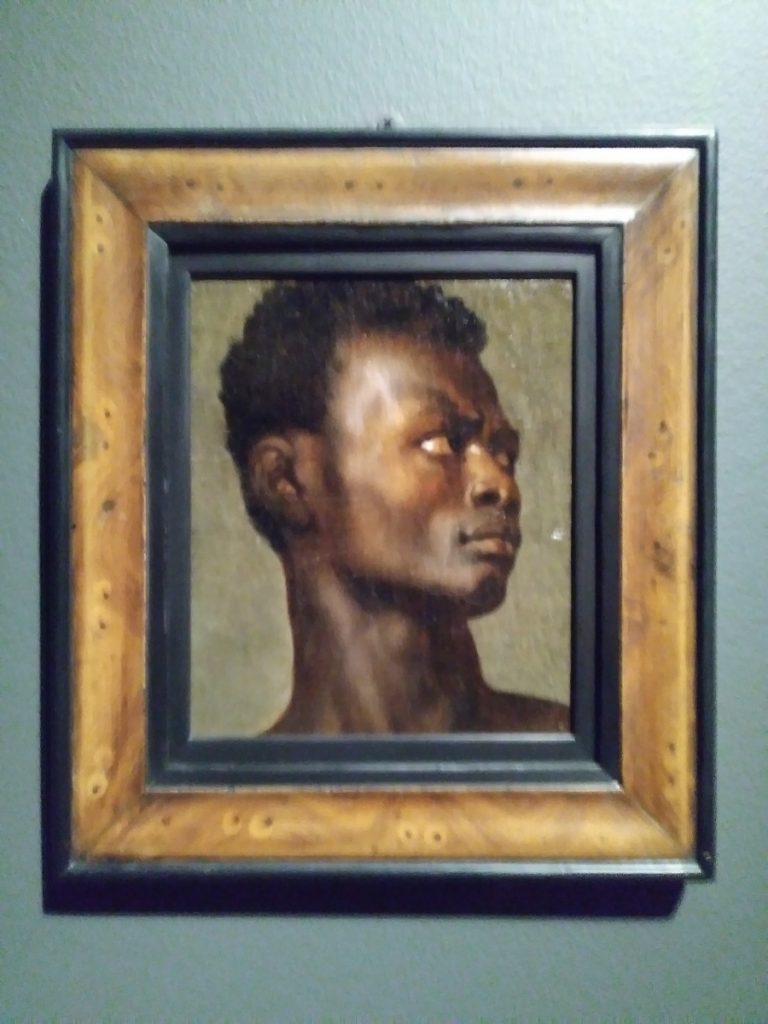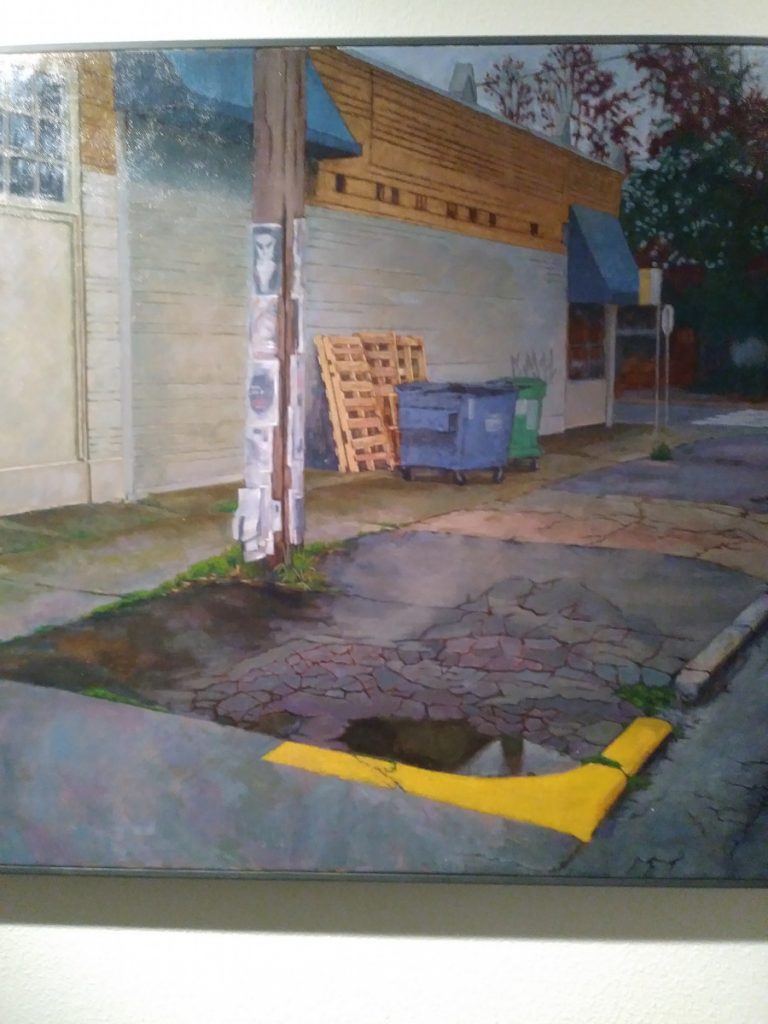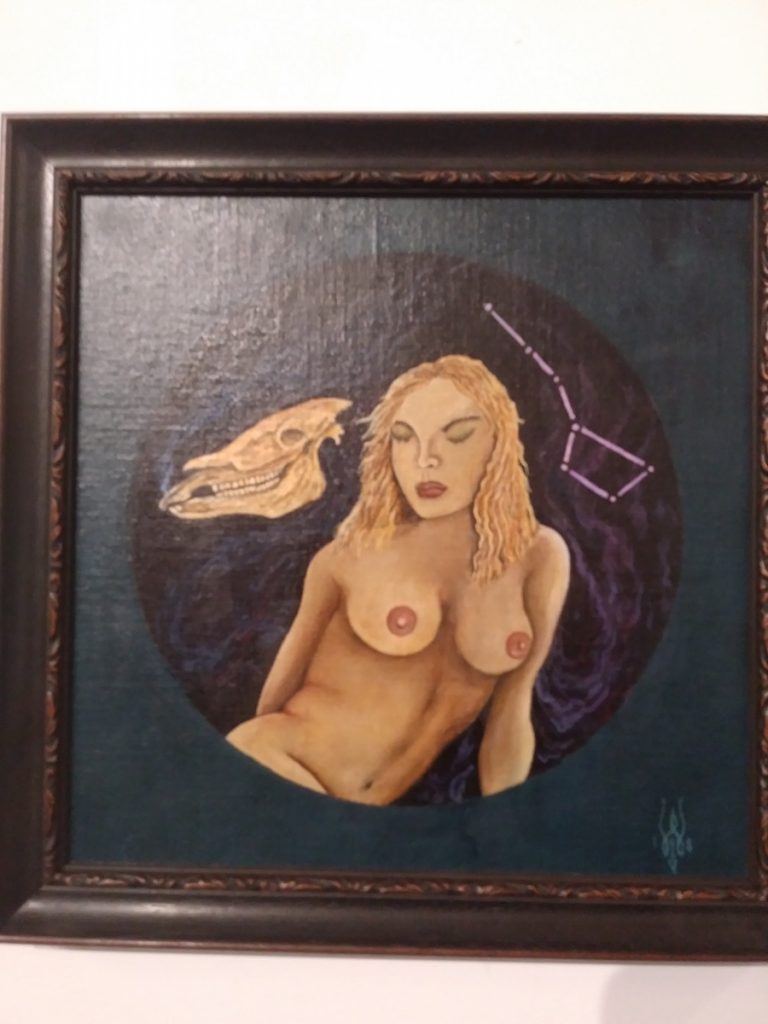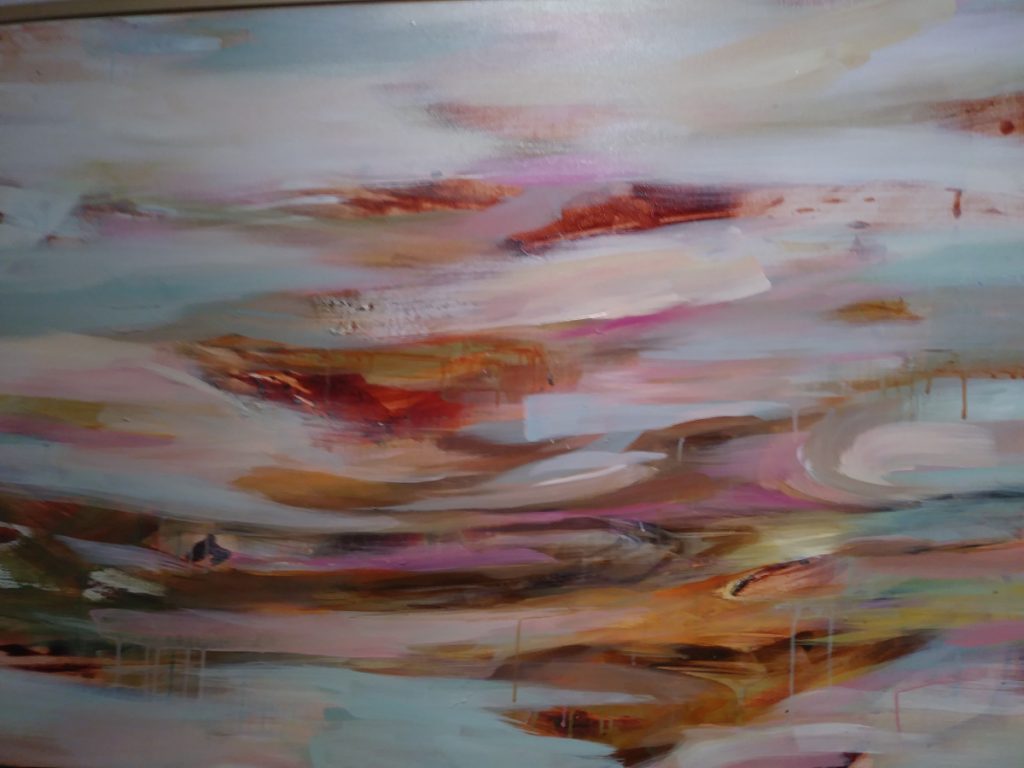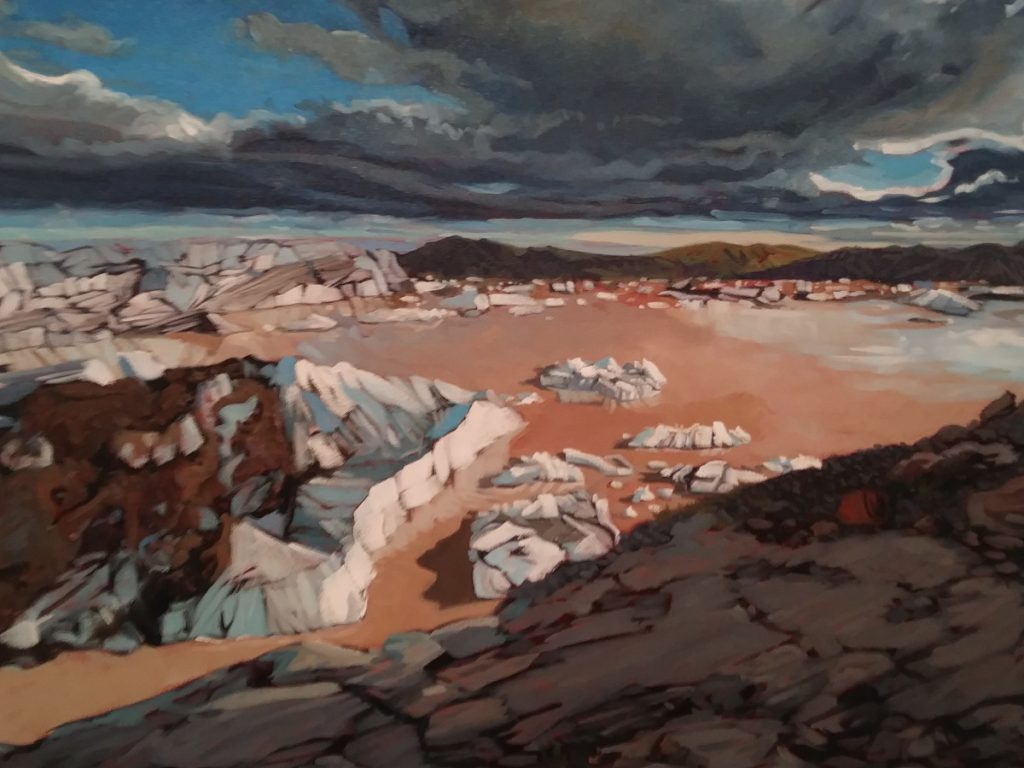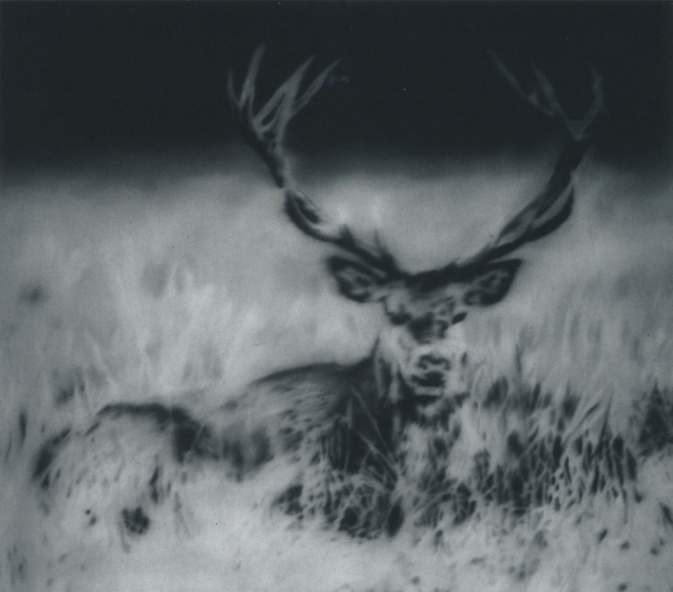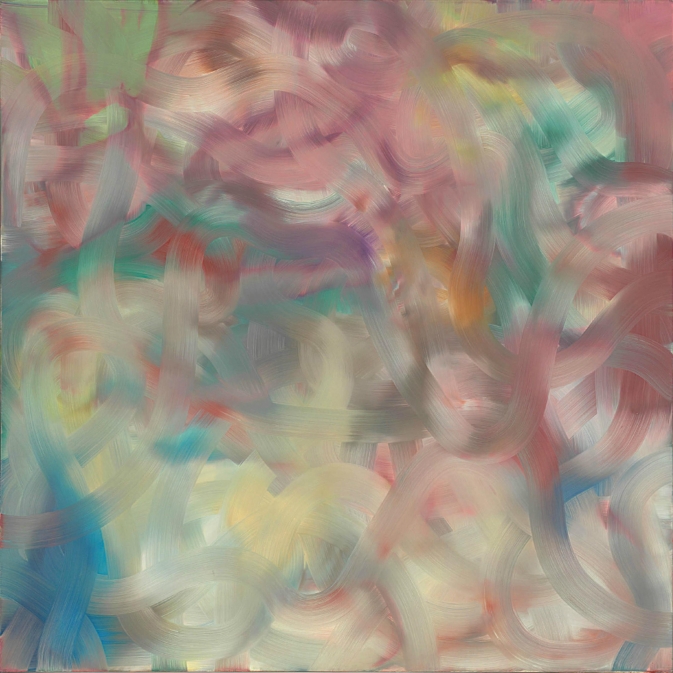On Thursday of Week 6, our program took a day long trip up to Seattle to experience First Thursday Arts Walk, The Henry and Jake Museums at the University of Washington, and The Seattle Art Museum. I wasn’t completely sure what kind of content or inspiration I was looking for in relation to my project, but by the end of the day I had an arsenal of techniques, concepts, genres, and mentors that could be applied to my work. Attached to each image below is a description of the piece, information known about it, and what concepts, techniques and ideas I found relevant to my project within it.
- Image of textual aspect of Sin Sol, Forest Memory, Abraham Avnisan and Micha Cardenas, Video Installation. Found at Henry Museum on U.W. Campus. Interest into Anthropocene, depictions and romanticization of the destruction and conservation of nature.
- Image of textual aspect of Sin Sol, Forest Memory, Abraham Avnisan and Micha Cardenas, Video Installation. Found at Henry Museum on U.W. Campus. Interest into Anthropocene, depictions and romanticization of the destruction and conservation of nature.
- Photograph of visual aspect of Sin Sol, Forest Memory, Abraham Avnisan and Micha Cardenas, Video Installation. Found at Henry Museum on U.W. Campus. Interest into Anthropocene, depictions and romanticization of the destruction and conservation of nature.
- Spaced Invaders, Digital Intervention on an Emily Carr Painting, Sonny Assu. found at Jake Gallery on U.W. campus. Use of digital technique, stark contrast, layering, differing cultural perspectives on nature
- Re-invaders, Digital Intervention on an Emily Carr Painting, Sonny Assu. found at Jake Gallery on U.W. campus. Use of digital technique, stark contrast, layering, differing cultural perspectives on nature
- It was, like, a super long time ago that ppl were here, right? Digital Intervention on an Emily Carr Painting, Sonny Assu. found at Jake Gallery on U.W. campus. Use of digital technique, stark contrast, layering, differing cultural perspectives on nature.
- Sonny Assu, Print on topographic map. Interest in differing perspectives of landscape and nature, iconography of animals, cultural ties to form and content.
- Sonny Assu, individual pieces of most recent project at The Jake Gallery at U.W. interest in layering of material and content, composition, differing perspectives on landscape and nature.
- Sonny Assu, piece of most recent project at The Jake Gallery at U.W. interest in layering of material and content, composition, differing perspectives on landscape and nature.
- Music-Pink and Blue No. 1, Oil on Canvas, Georgia O’Keeffe. Found at Seattle Art Museum. Interest in Abstraction, cropping, and soft color scheme.
- Mount Rainier, Bay of Tacoma, Oil on Canvas, Sanford Robinson Gifford. Found at S.A.M. Use of layered glazing and transparent medium to build up dramatic and romantic depictions of nature.
- #10, Oil on Canvas, Mark Rothko, found at Seattle Art Museum, use of color, abstraction, and emotional response/association of audience
- Rothko description of work, interesting explanation as to how work should be viewed
- Roberta Flack, chromogenic print, Xaviera Simmons. Found at S.A.M. Use of photography, symbolism, media and iconography to project content onto figure.
- St. Sebastian tended by St. Irene, Oil on Canvas, Georges de La Tour, found at S.A.M. noted for use of exaggerated use of value to depict dramatization of figures.
- Collection of Porcelain at the S.A.M. Interested in different forms of “beauty” and depictions of nature and other idealized concepts.
- Up close of Ram mask found at the S.A.M. Interest in conceptual content, use of Animism.
- Collection of Animal masks found at the S.A.M. Interest in conceptual content, use of totem-ism, Animism and symbolism.
- Collection of Animal masks found at the S.A.M. Interest in conceptual content, use of totem-ism, Animism and symbolism.
- “Study of African’s Head”, Oil on Canvas mounted on Wood Panel, Paul-Jean Flandrin at the S.A.M. Intense use of light and contrast, romantic and detailed figurative work.
- Oil on Canvas at TK Artist Lofts. Soft brushstroke technique, muted color scheme, romantic depiction of urban landscape.
- Mixed media on wooden board at the TK Artist Lofts. Animal depiction, interesting use of layering and space to convey multiple concepts.
- Small oil on board at the TK Artist Lofts. Animal and Figurative subject matter, conceptual inspiration.
- Abstract work at Zinc Gallery. Interested in color scheme and movement.
- Icelandic Landscape, part of What Words Could Not Express Series at Core Gallery. Interested in Cadmium red under-painting and technique, use of color, romantic depictions of nature
- Icelandic Landscape, part of What Words Could Not Express Series at Core Gallery. Interested in Cadmium red under-painting and technique, use of color, romantic depictions of nature


